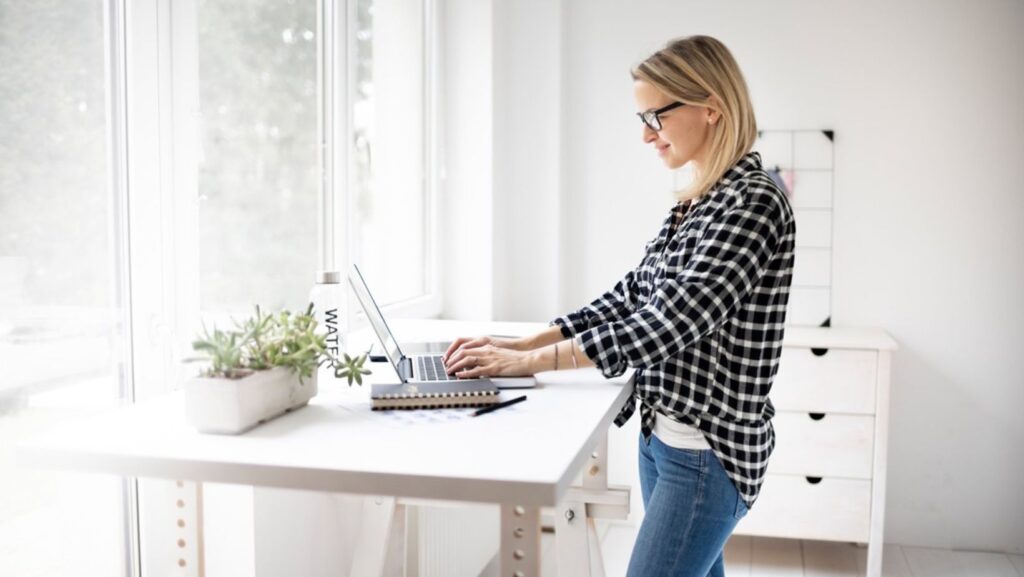
Office Furniture Markham: Creating Comfortable Workspaces
People spend nearly one-third of their waking hours at a desk, highlighting how essential workspace comfort is to well-being. Choosing the right office furniture isn’t just about style; it’s a decision that can significantly affect health and productivity. Whether it’s preventing back pain with ergonomic chairs or boosting collaboration with adaptable layouts, the right furniture shapes the work experience.
This article explores various aspects, including ergonomic features, flexible design, and more, to help create a workspace that truly supports comfort and efficiency.
The Impact of Ergonomics on Productivity
Office furniture directly affects comfort and productivity, making ergonomics a key consideration. Ergonomic solutions reduce physical strain and fatigue, which are common issues in traditional work environments.
Key Ergonomic Features to Look For
When selecting ergonomic office furniture, prioritize features that support healthy posture and movement. For chairs, seek adjustable seat height, lumbar support, and armrest positioning. Desks should accommodate sit-stand adjustments to encourage mobility throughout the day. Accessories like keyboard trays and monitor stands can further reduce strain on the neck and wrists.
The range of ergonomic office furniture Markham supplies, and in other regions as well, offers solutions like adjustable desks and chairs to support a healthier work environment. Businesses can explore these options to ensure every piece of furniture meets the unique needs of individual employees.
Customizing Ergonomics for Individual Needs
Customizing furniture settings can significantly improve comfort. For example, adjust the office chair height so feet rest flat on the floor, with knees at a 90-degree angle. Position monitors at eye level to avoid neck strain, and use footrests if needed for proper leg support. Taking the time to personalize each workstation setup makes a noticeable difference in day-to-day comfort and reduces long-term risks of repetitive strain injuries.
Ultimately, choosing an ergonomic office furniture solution benefits both employees and businesses by fostering a more comfortable and productive work environment.
Designing for Movement and Flexibility
In addition to ergonomics, designing for movement and flexibility is another way to enhance the workspace.

Furniture that encourages regular activity helps reduce stiffness and promotes better circulation, making a significant difference in comfort levels throughout the day.
Furniture That Encourages Movement
One of the most effective options for supporting movement is the sit-stand desk, which allows employees to switch between sitting and standing positions easily. This variation helps prevent prolonged sitting and keeps energy levels up during the workday. Complementary furniture, such as wobble stools and balance boards, can further promote micro-movements that reduce the risk of musculoskeletal issues.
Benefits of Modular and Mobile Furniture
Modular furniture adapts to changing needs in the office space, offering flexibility in layout without significant costs. For example, modular seating can be rearranged for team meetings, presentations, individual work, or even to accommodate visitors, keeping the office dynamic and adaptable to daily needs. Mobile furniture, like desks on wheels and foldable tables, boosts versatility by allowing teams to quickly adjust the layout for various tasks or events, supporting a flexible and agile workspace.
Accommodating Different Working Styles
Incorporating various workspaces within an office design accommodates different working preferences and tasks. Some employees might prefer quiet zones for focused work, while others thrive in collaborative settings. Creating a mix of private workstations, open areas, and breakout spaces allows for flexibility in how tasks are approached. This versatility is also valuable in home office furniture, where designated areas for different tasks can improve productivity and comfort.
Designing an office focused on movement and flexibility creates a more adaptable and healthier workplace. It helps employees feel empowered to choose the setup that best supports their tasks, boosting both satisfaction and performance.
Aesthetic Influence on Employee Morale
Elements like colors, shapes, and materials can subtly impact how workers feel in a space. For instance, furniture in calming hues such as soft blues or greens can reduce stress, while bold colors like red or orange may stimulate energy.

Rounded shapes often promote a relaxed atmosphere, whereas sharp, angular designs convey a sense of structure and focus. Materials like wood can create warmth, while metal and glass lend a sleek, modern feel.
Balancing Style and Function
Creating an inspiring workspace requires more than just new furniture—it’s about selecting pieces that combine aesthetics with practicality. Choose desks and chairs that fit the design theme and meet ergonomic standards. For example, a stylish chair should still provide proper back support, and a desk can have an attractive finish while offering ample workspace, further enhanced by desk mats that add comfort, protect surfaces, and elevate the aesthetic. Incorporating multifunctional items, such as storage units that double as seating, can enhance both visual appeal and office organization.
Trends Shaping Office Design
Current trends in office design reveal a preference for styles that blend form and function. Minimalist furniture, characterized by clean lines and simple colors, helps to reduce visual clutter. Biophilic design incorporates natural elements like wood finishes or greenery to foster a connection to nature, which can boost morale. Industrial style, with exposed materials such as metal and reclaimed wood, adds a sense of rawness and creativity to the environment.
When planning an office furniture installation, consider these stylistic elements to create a workspace that positively influences employee morale and productivity.
Final Thoughts
Choosing the right office furniture can significantly enhance the work environment, making it more supportive and engaging. Comfort, flexibility, and style are key factors that shape the space and influence employee satisfaction. Evaluate your team’s specific needs and the demands of the workspace to select furniture that not only looks good but also promotes well-being and productivity. A well-thought-out office design reflects a commitment to creating a positive atmosphere where employees can thrive and perform at their best.





